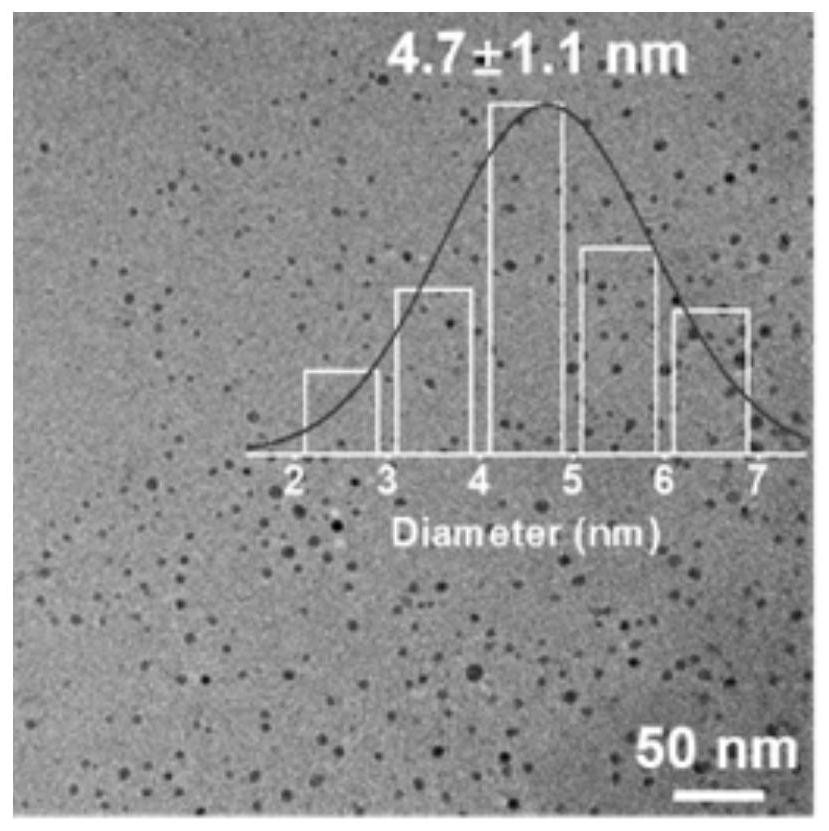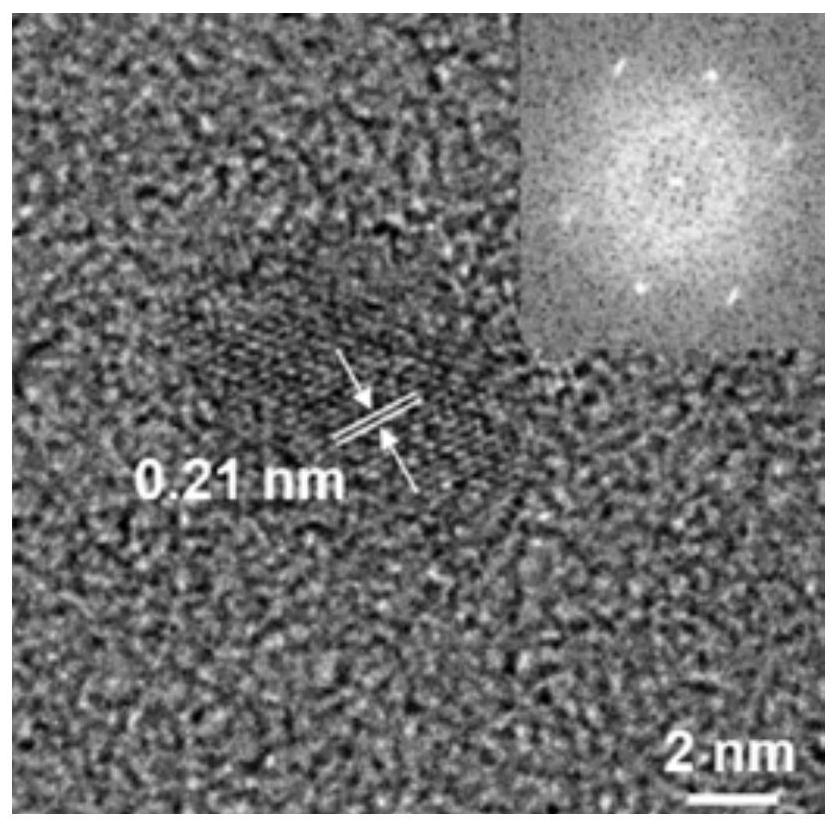Carbon quantum dot hydrogel composite scaffold material and preparation method and application
A technology of carbon quantum dots and composite scaffolds, applied in the field of biomedical engineering, can solve the problems of not being able to effectively promote osteogenic differentiation, and achieve the effects of promoting osteogenic differentiation, good antibacterial activity and osteogenic activity, and simple preparation process
- Summary
- Abstract
- Description
- Claims
- Application Information
AI Technical Summary
Problems solved by technology
Method used
Image
Examples
Embodiment 1
[0043] see figure 2 , a carbon quantum dot hydrogel composite scaffold material, including p-CQD / WS2 heterojunction with antibacterial activity, n-CQD with osteogenic differentiation activity, p-CQD / WS2 / n composed of photosensitizer and GelMA -CQD / GelMA hydrogel scaffold material.
[0044] As a further supplement of this embodiment, the p-CQD / WS2 heterojunction is an electrically neutral carbon quantum dot / tungsten sulfide nanosheet heterojunction.
[0045] As a further supplement to this embodiment, the n-CQDs are negatively charged functionalized carbon quantum dots.
[0046] As a further supplement to this example, the photosensitizer is Irgacure 2959. Irgacure 2959 is a potentiated non-yellowing UV photoinitiator.
[0047] As a further supplement to this embodiment, the GelMA is a methacrylated hydrogel.
Embodiment 2
[0049] see figure 2 , a preparation method of a carbon quantum dot hydrogel composite scaffold material, comprising the following steps: firstly taking the freeze-dried solid of GelMA, adding polybutylene succinate, p-CQD / WS2 heterojunction and n-CQD, and finally adding The photosensitizer is continuously irradiated under ultraviolet light until the hydrogel is solidified, and the p-CQD / WS2 / n-CQD / GelMA hydrogel scaffold material is obtained.
[0050] As a further supplement of this example, the preparation process of the freeze-dried solid of GelMA is as follows: first take 0.5-1.5g of gelatin and preheat at 45-55°C for 8-12min, then add 6-10mL of methacrylic acid and vigorously stir; Then preheat polybutylene succinate at 35-45°C for 8-12min, then take 30-50mL polybutylene succinate and add it to the mixed solution formed by gelatin and methacrylic acid; After completion, the reacted mixture was dialyzed at 40-50° C. for 66-78 h, and finally freeze-dried with a freeze dryer...
Embodiment 3
[0055] To prepare positively charged carbon quantum dots (p-CQDs) with antibacterial activity, the specific implementation process is as follows:
[0056] (a) Weigh 0.1g of spermidine and dissolve it in 10mL of deionized water, ultrasonically treat for 10min to mix the spermidine solution evenly, transfer the spermidine solution to a special reaction glass tube for a microwave reactor, and the microwave reaction conditions are 200 °C, and the reaction time was 3 min.
[0057] (b) After the reaction is completed, after naturally cooling to room temperature, the obtained reaction product is filtered through a 0.22 μm filter membrane to remove the unreacted reactant, and dialyzed using a 1000Da dialysis bag for two days.
[0058] Depend on Figure 1-a , Figure 1-b , Figure 1-c and Figure 1-d It can be seen that the size of the p-CQDs with antibacterial activity is 4.7±1.1 nm, and the interlayer spacing is 0.376 nm.
PUM
| Property | Measurement | Unit |
|---|---|---|
| size | aaaaa | aaaaa |
Abstract
Description
Claims
Application Information
 Login to View More
Login to View More - R&D
- Intellectual Property
- Life Sciences
- Materials
- Tech Scout
- Unparalleled Data Quality
- Higher Quality Content
- 60% Fewer Hallucinations
Browse by: Latest US Patents, China's latest patents, Technical Efficacy Thesaurus, Application Domain, Technology Topic, Popular Technical Reports.
© 2025 PatSnap. All rights reserved.Legal|Privacy policy|Modern Slavery Act Transparency Statement|Sitemap|About US| Contact US: help@patsnap.com



